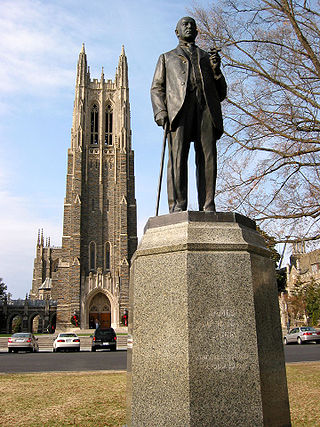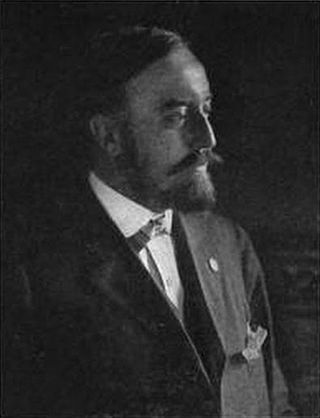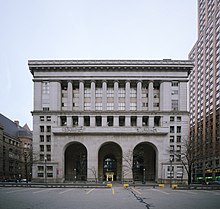
Charles Keck was an American sculptor from New York City, New York.

Union Station, also known as Pennsylvania Station and commonly called Penn Station, is a historic train station in Downtown Pittsburgh, Pennsylvania. It was one of several passenger rail stations that served Pittsburgh during the 20th century; others included the Pittsburgh & Lake Erie Railroad Station, the Baltimore and Ohio Station, and Wabash Pittsburgh Terminal, and it is the only surviving station in active use.

Allegheny Center is a neighborhood on Pittsburgh's North Side. Its zip code is 15212, and it has representation on Pittsburgh City Council by both council members for District 6 and District 1 (Northside).

Fineview — known to older generations as Nunnery Hill — is a neighborhood on Pittsburgh's North Side with expansive views of downtown Pittsburgh. The most famous of these views is from the Fineview Overlook at the corner of Catoma Street and Meadville Street.

The Allegheny County Courthouse in downtown Pittsburgh, Pennsylvania, is part of a complex designed by H. H. Richardson. The buildings are considered among the finest examples of the Romanesque Revival style for which Richardson is well known.

Henry Hornbostel was an American architect and educator. Hornbostel designed more than 225 buildings, bridges, and monuments in the United States. Twenty-two of his designs are listed on the National Register of Historic Places, including the Oakland City Hall in Oakland, California and the Soldiers and Sailors Memorial Hall and Museum and University Club in Pittsburgh, Pennsylvania.

Rodef Shalom Congregation is an historic Reform Jewish congregation and synagogue located at 4905 Fifth Avenue, Pittsburgh, Pennsylvania, in the United States. The landmark building was designed by architect Henry Hornbostel and completed in the Beaux-Arts style.

Frederick John Osterling was an American architect, practicing in Pittsburgh from 1888.

Schenley Plaza is a public park serving as the grand entrance into Schenley Park in Pittsburgh, Pennsylvania.

The Soldiers and Sailors Memorial Hall and Museum is a National Register of Historic Places landmark that is located in Pittsburgh, Pennsylvania, United States. It is the largest memorial in the United States that is dedicated solely to honoring all branches of military veterans and service personnel.

The University Club is an eight-story building of the University of Pittsburgh designed by Henry Hornbostel and completed in 1923 that is a contributing property to the Schenley Farms Historic District on the school's campus in Pittsburgh, Pennsylvania, United States. It serves as a faculty club with publicly accessible dining, banquet, and conference facilities, while the upper four floors serve as undergraduate student housing referred to as University Hall.

Forbes Avenue is one of the longest streets in Pittsburgh, Pennsylvania, United States. It runs along an east–west route for a length of approximately 7 mi (11 km).

The Government of Pittsburgh is composed of the Mayor, the City Council, and various boards and commissions. Most of these offices are housed within the Pittsburgh City-County Building. The Government of Pittsburgh receives its authority from the Pennsylvania General Assembly pursuant to Part III of Title 53 of the Pennsylvania Consolidated Statutes, relating to Cities of the Second Class.

Ocean City City Hall is located in Ocean City, Cape May County, New Jersey, United States. The building was built in 1914 and added to the National Register of Historic Places on June 13, 1997. To celebrate its 100th anniversary, it was made the subject of the 2014 Ocean City Seasonal Beach Tag.

The Des Moines City Hall is a government building in Des Moines, Iowa, built in 1909 and 1910. It was individually listed on the National Register of Historic Places on November 10, 1977 as the Municipal Building, and became a contributing property in the Civic Center Historic District in 1988. The building serves as the seat for the government of the city of Des Moines. Beginning April 7, 2016, City Hall offices were temporarily relocated while the building underwent renovation. The construction was necessary to install modern heating, cooling, and sprinkler systems while preserving the historic character of the building. The project was expected to take 18–24 months. During that time, City Hall was closed to the public, and City offices moved to other nearby locations. Between February 26, 2018 and April 9, 2018, city offices moved back to City Hall.
Grant Street is the main government and business corridor in Pittsburgh, Pennsylvania. It is home to the global headquarters of U.S. Steel, Koppers Chemicals, and Oxford Development. It also is home to the seat of Allegheny County, City of Pittsburgh and the regional Federal Government offices. It is part of the Pittsburgh Central Downtown Historic District.

Thomas Hannah was an architect in Pittsburgh and Philadelphia in the United States. He is credited with designing the Saint Nicholas Greek Orthodox Cathedral. He also designed the Western Theological Seminary in Pittsburgh. He also designed Midtown Towers, originally known as the Keenan Building and built in 1907. It was built for Colonel Thomas J. Keenan, owner and founder of the Penny Press, which became Pittsburgh Press. The building may have been modeled after the Spreckel Building/ Call Building (1898) of San Francisco. It is decorated with visages of 10 notables associated with Pittsburgh and Pennsylvania, including then-mayor George Guthrie and then-governor Edwin Stuart, in addition to George Washington and Teddy Roosevelt. The dome was once capped with the figure of an eagle in flight.

Edward C. Gainey is an American politician who is the 61st mayor of Pittsburgh, Pennsylvania. Previously, he served as a member of the Pennsylvania House of Representatives from the 24th district. In November 2021, Gainey became the first African-American to become the mayor of Pittsburgh and assumed office on January 3, 2022.

The Hartford Municipal Building, also known as Hartford City Hall, is a historic Beaux-Arts structure located at 550 Main Street in Hartford, Connecticut. Completed in 1915, it is a prominent local example of Beaux-Arts architecture, and is the third building to serve as city hall. It was added to the National Register of Historic Places in 1981.
George Carnegie Palmer, was an American architect who specialized in civic and academic buildings across the United States. He best known for his work with the architect Henry F. Hornbostel. By 1904, Palmer & Hornbostel ranked "among the leading architects in the United States."

























